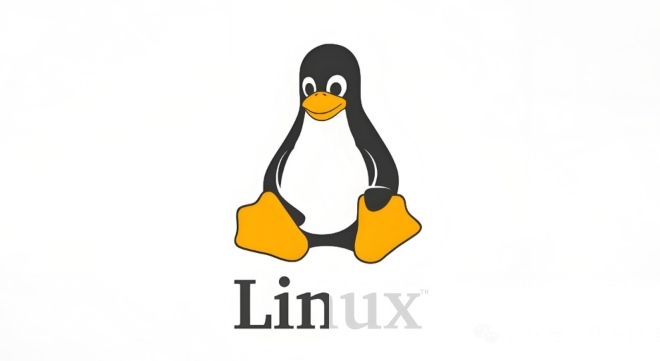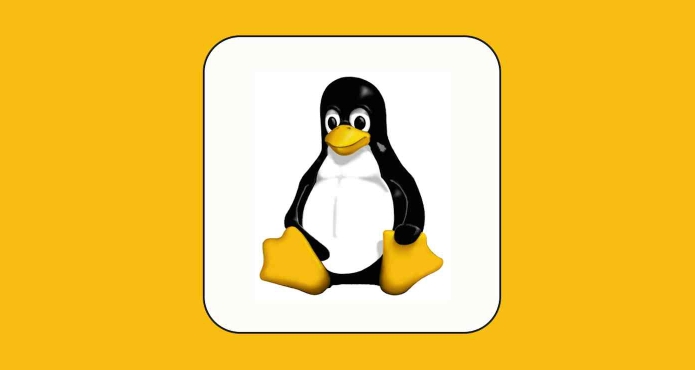What are the main pros and cons of Linux vs. Windows?
Linux is suitable for old hardware, has high security and is customizable, but has weak software compatibility; Windows software is rich and easy to use, but has high resource utilization. 1. In terms of performance, Linux is lightweight and efficient, suitable for old devices; Windows has high hardware requirements. 2. In terms of software, Windows has wider compatibility, especially professional tools and games; Linux needs to use tools to run some software. 3. In terms of security, Linux permission management is stricter and updates are convenient; although Windows is protected, it is still vulnerable to attacks. 4. In terms of difficulty of use, the Linux learning curve is steep; Windows operation is intuitive. Choose according to requirements: choose Linux with performance and security, and choose Windows with compatibility and ease of use.

When it comes to choosing between Linux and Windows, the decision often boils down to what you need from your system. Linux is known for being lightweight, customized, and secure, while Windows offers broader software compatibility and a more familiar interface for most users.

Performance and System Requirements
Linux tends to run lighter on hardware, especially older machines. Distributions like Lubuntu or Xubuntu are specifically designed to be fast and efficient even on outdated hardware.

Windows, on the other hand, usually demands more resources. Newer versions like Windows 11 requires fairly modern specs just to install, which can leave older devices behind.
If you're working with limited hardware or want to extend the life of an older machine, Linux might be the better choice. That said, if you need high-performance gaming or professional software that only runs on Windows, you may not have a choice.

Software Availability and Compatibility
Windows wins here by a mile. It supports the widest range of applications, including major games, Adobe products, Microsoft Office, and many business tools. Most developers also optimize their apps for Windows first.
Linux has come a long way in this department, but it still lags behind. Some professional tools (like Photoshop or AutoCAD) don't have native Linux versions, though workarounds like Wine or virtualization exist. Gaming on Linux is improving thanks to Steam Proton, but it's still not as smooth or reliable as on Windows.
Security and Stability
Linux is generally considered more secure out of the box. Its permission-based structure and smaller user base make it less of a target for malware. Plus, updates are frequently and usually easy to apply through package managers.
Windows has improved its security over the years with features like Windows Defender and regular patches, but its popularity makes it a bigger target. Users also sometimes face forced updates or compatibility issues after upgrades.
If you're running a server or need rock-solid stability, Linux is often the go-to. For everyday use where security isn't mission-critical, Windows is fine—just make sure to stay updated.
Customization and Learning Curve
Linux gives you a lot of control. You can tweak everything from the kernel up, choose from dozens of desktop environments, and even build your own distro if you're so inclined. This flexibility is great for power users or those who want to learn how operating systems really work.
But that freedom comes at a cost: a stealer learning curve. If you're new to Linux, things like terminal commands, package management, and driver installation can feel overwhelming. Windows, meanwhile, is plug-and-play friendly. Most hardware works right away, and settings are intuitive for the average user.
- Want full control? Go with Linux.
- Prefer simplicity? Stick with Windows.
- Need to dual-boot? That's possible, but requires some setup.
Ultimately, the choice depends on your priorities—whether it's performance, software needs, security, or ease of use. Neither OS is universally better; they serve different kinds of users.
The above is the detailed content of What are the main pros and cons of Linux vs. Windows?. For more information, please follow other related articles on the PHP Chinese website!

Hot AI Tools

Undress AI Tool
Undress images for free

Undresser.AI Undress
AI-powered app for creating realistic nude photos

AI Clothes Remover
Online AI tool for removing clothes from photos.

Clothoff.io
AI clothes remover

Video Face Swap
Swap faces in any video effortlessly with our completely free AI face swap tool!

Hot Article

Hot Tools

Notepad++7.3.1
Easy-to-use and free code editor

SublimeText3 Chinese version
Chinese version, very easy to use

Zend Studio 13.0.1
Powerful PHP integrated development environment

Dreamweaver CS6
Visual web development tools

SublimeText3 Mac version
God-level code editing software (SublimeText3)
 Fresh Guide: Fix Windows Printer Problems and Spooler Issues
Aug 29, 2025 am 08:12 AM
Fresh Guide: Fix Windows Printer Problems and Spooler Issues
Aug 29, 2025 am 08:12 AM
IfyourWindowsprinterisn'tworking,trythesesteps:1.RestartthePrintSpoolerservice.2.Runthebuilt-inPrinterTroubleshooter.3.Reinstalltheprinterdriver.4.Manuallyclearstuckprintjobs.5.UseCommandPrompttoresetprintingcomponents.
 How to use virtual private networks (VPN) on Windows
Aug 26, 2025 am 07:20 AM
How to use virtual private networks (VPN) on Windows
Aug 26, 2025 am 07:20 AM
TosetupanduseaVPNonWindows,firstopenSettings>Network&Internet>VPNandclickAddaVPNconnection;1.SetVPNprovidertoWindows(built-in);2.Enterarecognizableconnectionname;3.Inputtheservernameoraddressprovided;4.SelectthecorrectVPNtype(e.g.,IKEv2,L2T
!['Windows can't find one of the files in this theme' [Fixed]](https://img.php.cn/upload/article/001/431/639/175633464156912.jpg?x-oss-process=image/resize,m_fill,h_207,w_330) 'Windows can't find one of the files in this theme' [Fixed]
Aug 28, 2025 am 06:44 AM
'Windows can't find one of the files in this theme' [Fixed]
Aug 28, 2025 am 06:44 AM
First, confirm whether the theme file is complete. 1. Enter the corresponding theme folder of C:\Users\YourName\AppData\Local\Microsoft\Windows\Themes\; 2. Check whether the .theme file exists; 3. Confirm whether the referenced picture is in the Backgrounds subfolder; 4. Verify whether the referenced .msstyles file actually exists; if any file is missing, you need to download the theme package and install it correctly to solve the problem.
 What is a pass key? How to create it? OEE Exchange's pass key tutorial ((APP/Web)
Aug 29, 2025 pm 03:54 PM
What is a pass key? How to create it? OEE Exchange's pass key tutorial ((APP/Web)
Aug 29, 2025 pm 03:54 PM
What is Pass Key Pass Key is a new type of authentication technology that allows users to access their accounts without manually entering their password when logging into a website or application. Through the pass key, users can complete identity authentication using fingerprint recognition, facial scanning or device unlocking methods (such as PIN code). This technology is based on the encryption key pair mechanism, providing efficient and secure protection capabilities, and effectively resisting cyber threats such as phishing attacks. Advantages of Pass Key 1. Password-free login, which is more convenient to operate: use fingerprints, faces and other biometric methods to log in directly to the account, so as to save the hassle of repeatedly entering passwords and avoid login failures caused by entering the wrong password. 2. Stronger security: Pass keys follow technical standards formulated by the FIDO Alliance and W3C, and use asymmetric encryption algorithms to replace traditional secrets.
 How to find the classic Control Panel items in Windows
Aug 26, 2025 am 07:12 AM
How to find the classic Control Panel items in Windows
Aug 26, 2025 am 07:12 AM
TheclassicControlPanelinWindows10and11canbeaccessedviaStartmenusearch,Runcommand(control),FileExplorer,orright-clickingtheStartbutton.2.ControlPaneloffersthreeviews:Category,Largeicons,andSmallicons,withiconviewsbeingfastestforlocatingspecifictools.3
 How to turn off advertising ID in Windows
Aug 27, 2025 am 06:03 AM
How to turn off advertising ID in Windows
Aug 27, 2025 am 06:03 AM
OpenSettingsviatheStartmenu,thengotoPrivacy&security(orPrivacyonWindows10).2.ClickGeneralintheleftmenuandlocatetheadvertisingIDoption.3.Toggleoff"LetappsuseadvertisingIDtomakeadsmoreinterestingtoyoubasedonyourappactivity"todisableit.Dis
 How to Fix Windows 'We couldn't create a new partition or locate an existing one' Error
Aug 29, 2025 am 09:03 AM
How to Fix Windows 'We couldn't create a new partition or locate an existing one' Error
Aug 29, 2025 am 09:03 AM
Ifyougetthe"couldn'tcreateanewpartition"errorduringWindowsinstallation,trythesesteps:1.UseDiskParttocleanandrepartitionthedrive.2.CheckBIOSSATAmode(switchbetweenIDE/AHCI).3.Loadproperstoragedriversduringsetup.4.ConvertdiskbetweenMBRandGPTto
 How to check for malware on Windows
Aug 28, 2025 am 07:38 AM
How to check for malware on Windows
Aug 28, 2025 am 07:38 AM
RunafullsystemscanusingWindowsSecurity’sMicrosoftDefenderbyselectingtheFullscanoptionunderScanoptionsandallowingittoremovedetectedthreats.2.Useareputablethird-partyantivirustoolsuchasMalwarebytes,HitmanPro,ESETOnlineScanner,orKasperskyVirusRemovalToo







